Salvador Dalí created a refuge for his wife, and a sensory allegory of their psyches and relationship: in the medieval castle and garden of Gala Dalí.
Thirty-three years ago this month, a flashy Cadillac sped toward a castle in the tiny village of Púbol in Catalunya. A dead woman rode upright in the back seat. With a nurse at her side, 87-year-old Gala Dalí was escaping from the world one last time. Today, there is more than a glimpse of her unusual relationship with her husband and their bizarre psyches in the castle and garden of Gala Dalí.
This article contains affiliate links and/or references to our advertisers. We may receive compensation when you click on or make a purchase using these links.
Table of Contents
In the castle and garden of Gala Dalí, the surreal lives on as allegory to the nature of the couple’s life together and their individual personalities.

Salvador Dalí, by all accounts, was besotted with his future wife from the moment they met. Ten years younger than she, he celebrated her as his muse and believed she cured his youthful madness. It wasn’t the first time, nor the last, Gala would have similar effect. Click here if you can’t see the video montage of works that she inspired in Dalí, below:
Gala’s Earlier Life
Born in Kazan, Russia in 1894, the teenaged Gala was tubercular. She met her first husband, French poet Paul Éluard, when both were patients at a sanatorium in Davos, Switzerland. Married in 1918, their daughter, Cecile, was born that same year.
Concurrently at the turn of the 20th century, the European avant-garde began an art movement in Zurich called Dada. Dadaism quickly spread to Berlin and other capitals. It rejected conventional artistic constraints in favor of cubism, collage, and abstract writing. Dadaists even questioned whether words required their traditional meanings. Éluard, disillusioned by World War I military service, found consolation in these new approaches.
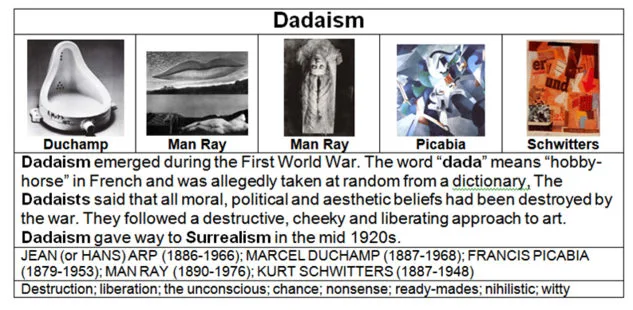
The Advent of Surrealism
Between wars, European intellectuals and artists further rejected bourgeois society. They blamed capitalism – its “reason” and “logic” – for global conflict. In response, they embraced an irrational chaos that was reflected in later movements. The most notable of these was Surrealism, centered in Paris.
Many Surrealists were polymathic, utilizing visual arts, literature, film, and music. Surrealists addressed political ideology and practice, philosophy, and social theory. Decades later, Dalí, an obvious polymath yet a fabulist as well, would frustrate an American television panel appearing on “What’s My Line.” After he claimed accomplishments as an artist, writer, humorist, and athlete, panelist Arlene Francis famously exclaimed, “Is there anything you don’t do?”
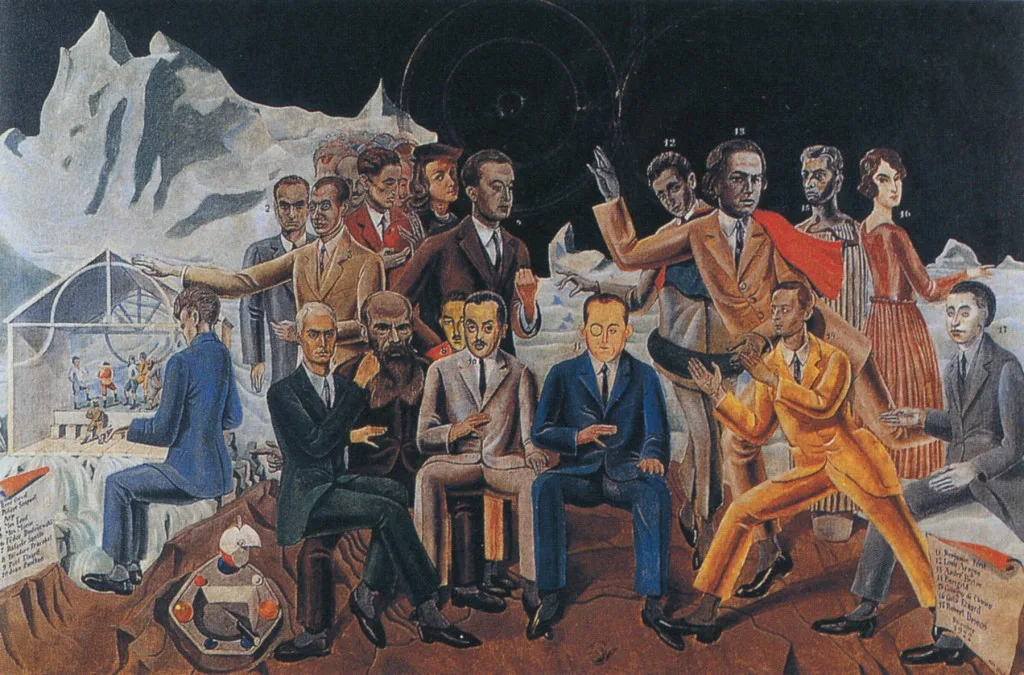
The Surrealistic milieu in Paris during the 1920’s was made for Gala. Salons and cafes were filled with all sorts of bohemians. Their controversial behavior and unconventional lives were far outside of traditional boundaries. Gala began cultivating a presence, using elegant dress and conceit to convey self-importance.
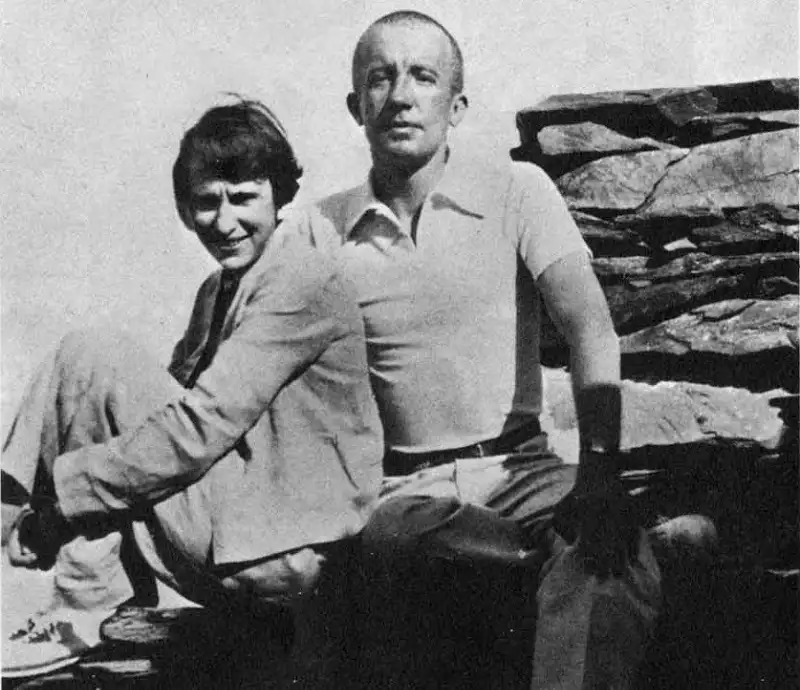
Gala’s Bohemian Lifestyle
“Gala knew what she wanted, the pleasures of the heart and the senses, and the companionship of genius.” – Andre Thirion, Surrealist writer and activist.
Paying little attention to daughter Cecile (they would remain estranged for life with Gala attempting at one point to disinherit her), Gala began taking on lovers. One of these, the Surrealist painter Max Ernst, lived with the Éluards in ménage à trois. After some drama which had Ernst and Gala traveling to Vietnam chasing after Éluard, it was decided Gala would remain with her husband.
In 1929, the Éluards, part of a group that included fellow Surrealists René and Georgette Magritte and Camille Goemans, visited Dalí in Cadaqués. A few weeks later, when Éluard, Cecile, and the rest returned to Paris, Gala stayed on with Dalí.
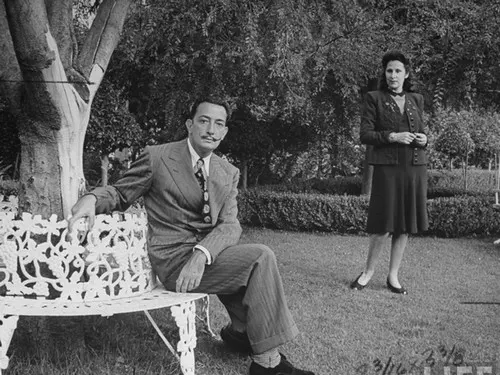
Gala Sets Her Gaze on Dalí
“Gala was the demonic dominatrix of his dreams. For her part, she was in the market for another celebrity husband.” John Richardson, Vanity Fair, December 1998
Convinced of Dalí’s genius, Gala was instrumental in persuading André Breton, founder of the splintering Surrealist movement, that his individuality would bolster Breton’s faction. Returning to Paris as new lovers, the pair presided over an exhibition of Dalí’s paintings at Galerie Goemans. Breton would go on to publicly denounce the couple, claiming Gala destroyed everyone she befriended.
“Dalí was a latecomer to Surrealism. An earlier generation of Surrealist painters – Max Ernst, Joan Miró, Andre Masson, Yves Tanguy – had paved the way for him, as had the Surrealist poets, above all Andre Breton, a control freak of genius who headed the movement.” John Richardson, Vanity Fair, December 1998
Gala became Dalí’s business manager, in charge of their money and negotiating with patrons and galleries alike. She micro-managed daily life to the point of selecting his brushes and colors. This left him free from mundane distractions to churn out paintings, although she hounded him mercilessly on his technique. He, in turn, began to fertilize the legend of Gala. She was his inspiration and reason for living. They were fused beings; he signed his work with both their names. There were rumors of extra-marital debauchery. By the mid-1930’s they had grown this flamboyant mystique to become world-renowned celebrities: fashionable, powerful and influential.
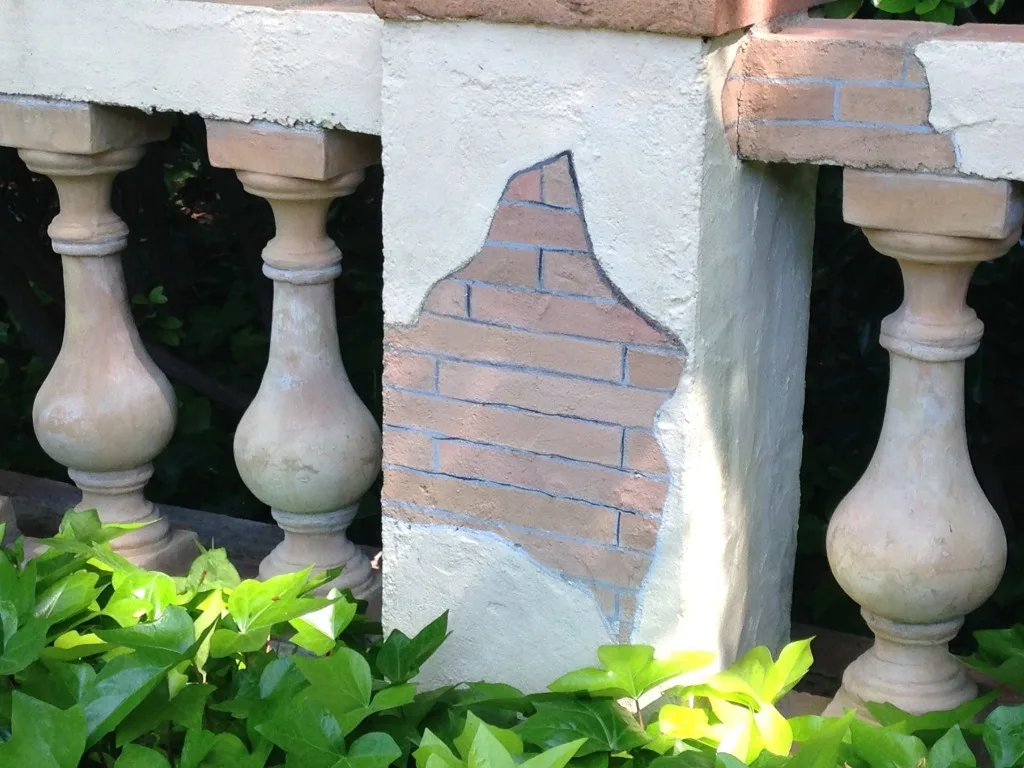
Dalí’s Homage To His Wife
Wandering through the castle and garden of Gala Dalí, you might wonder what kind of woman she was. Who could sow the seeds which reaped such devotion? Dalí’s homage to Gala here stems from a traditional backdrop of beauty and serenity but quickly descends into depravity. What kind of refuge was this, really?
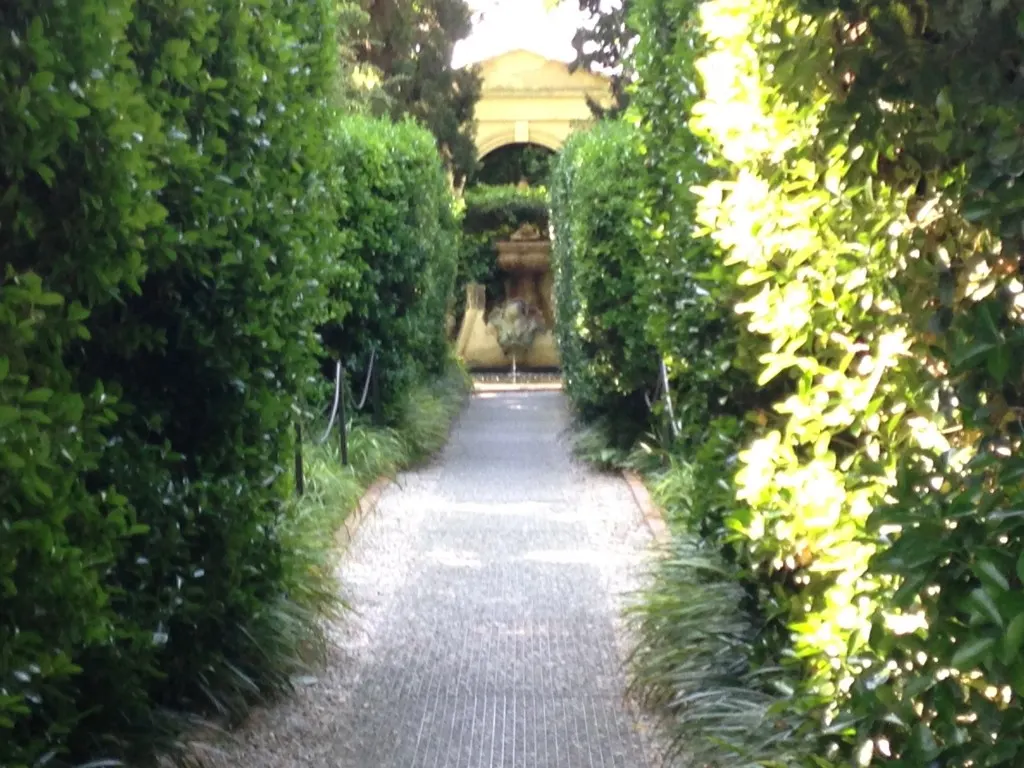
Throughout, there are the familiar creepy and even frightening, so very Dalí, elements we recognize.
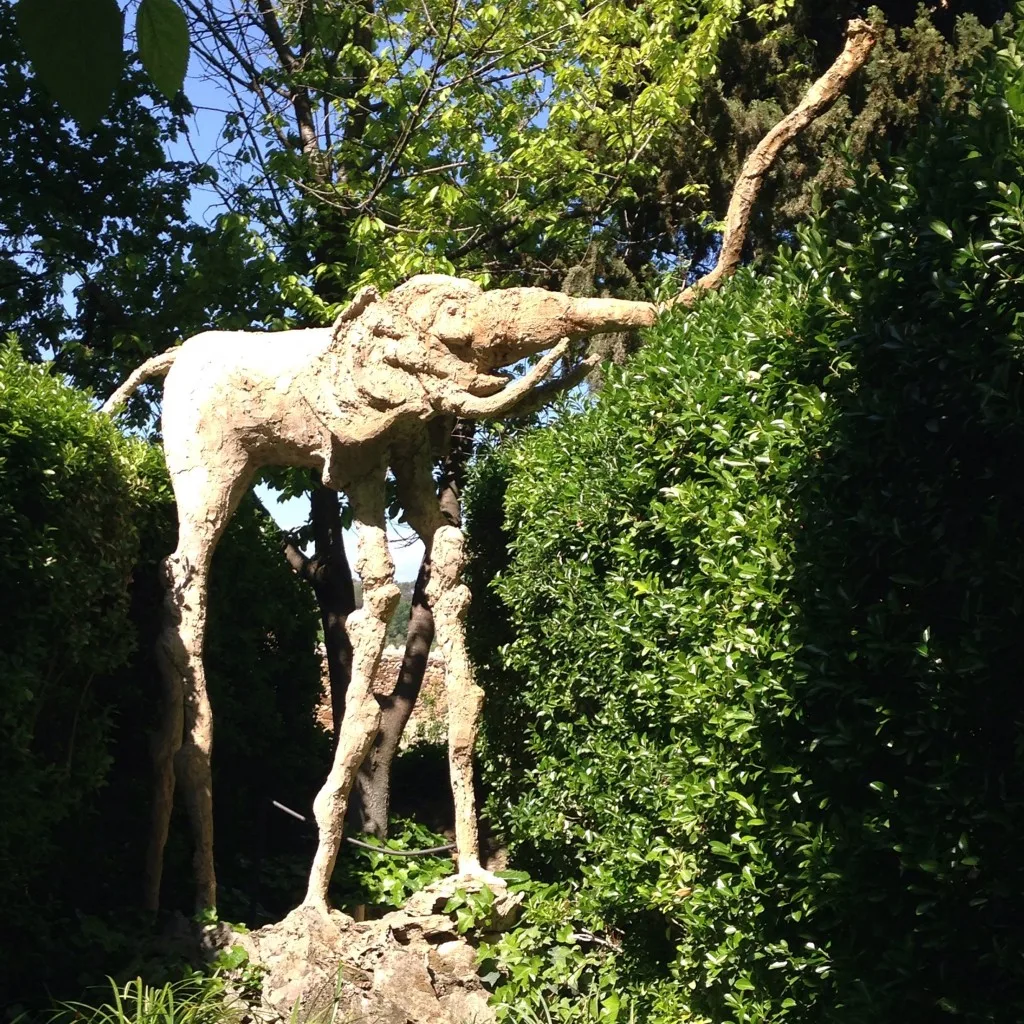
Putting a multi-ton elephant on giraffe legs (or are they the limbs of a flamingo?) is a contradiction that suited Dali to a T!
– Paul Chimera
His reverence for Gala manifests in even more disturbing and bizarre expressions.
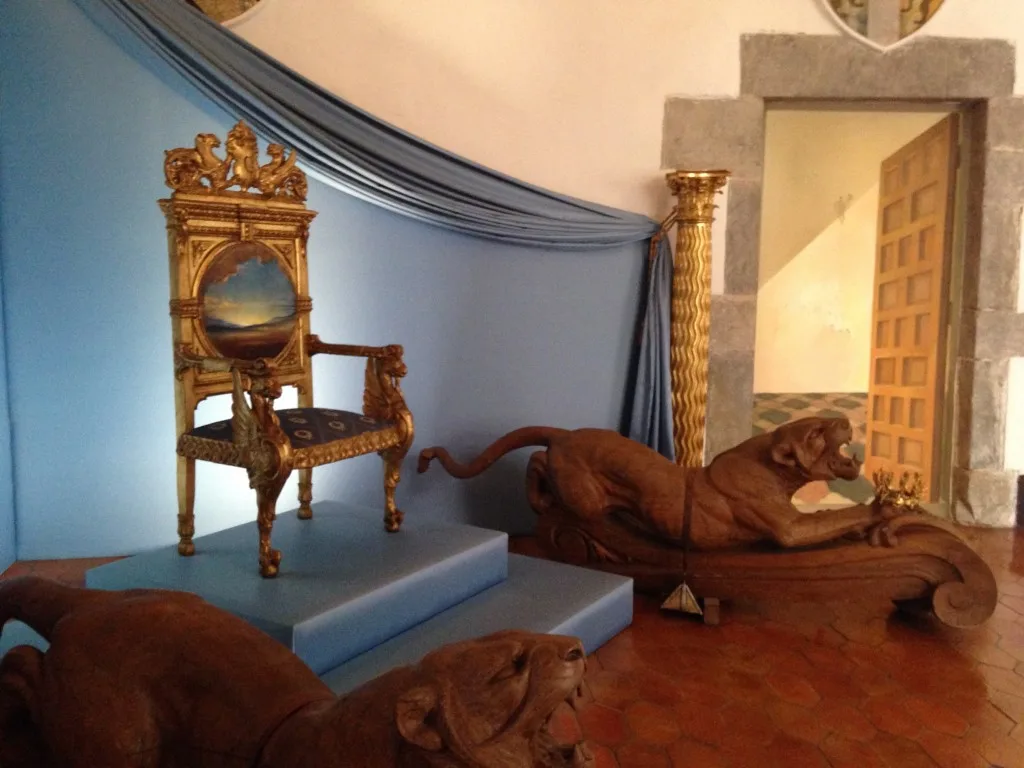
Everything celebrates the cult of Gala, even the round room, with its perfect echo that crowns the building as a whole and which is like a dome of this Galactic cathedral. When I walk around this house I look at myself and I see my concentricity. I like its moorish rigour. I needed to offer Gala a case more solemnly worthy of our love. That is why I gave her a mansion built on the remains of a 12th century castle: the old castle of Púbol in La Bisbal, where she would reign like an absolute sovereign, right up to the point that I could visit her only by hand-written invitation from her. I limited myself to the pleasure of decorating her ceilings so that when she raised her eyes, she would always find me in her sky.
– Salvador Dali, Confessions inconfessables (1973)
Although he dedicated this project to the wife he revered citing an idealistic notion of love, its sinister aspects create tension and apprehension with the visitor. This foreboding mood is emphasized inside the castle by the constant background music: Wagner, Dalí’s favorite composer. I asked the young docents on duty whether they got tired of all the Wagner. “You have no idea,” came the reply, “how much we hate it. It’s horrifying to listen to, over and over.”
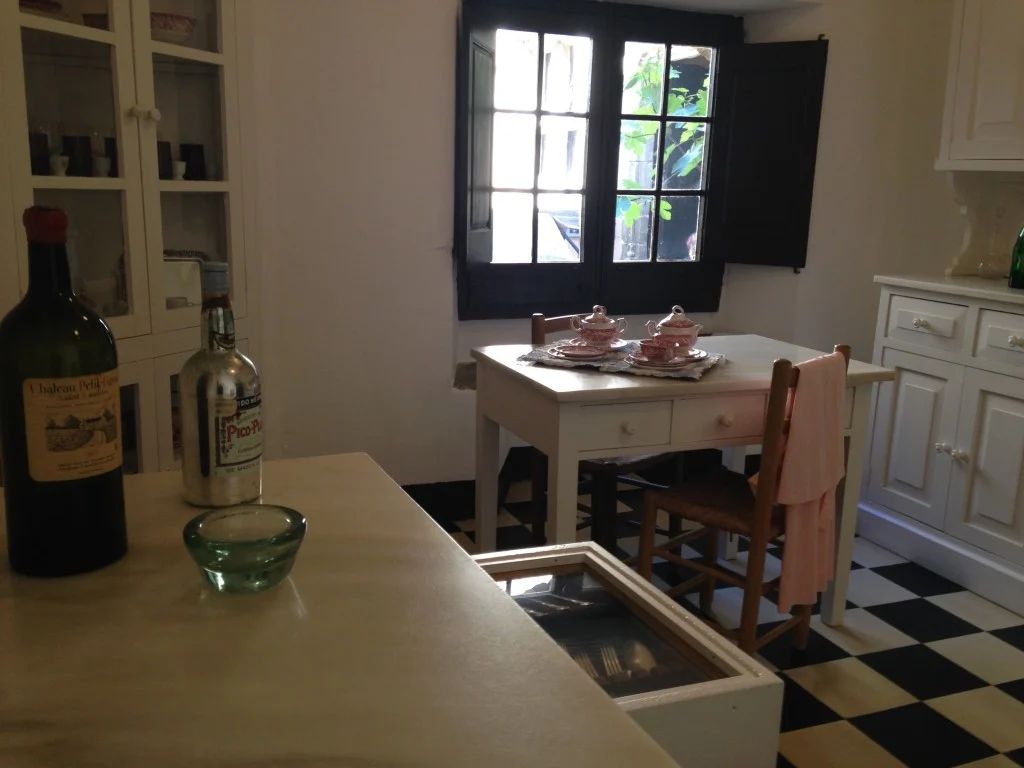
Disturbing Elements Disrupt the Tranquil Site
You begin to realize that in the house and garden of Gala Dalí, tranquility is punctuated by disturbances not attributable to her alone. Instead, the furnishings and plantings are alive with the fears, anxieties, preferences and ambitions of Salvador, who was childlike in his narcissism. This retreat wasn’t so much for Gala as about him.
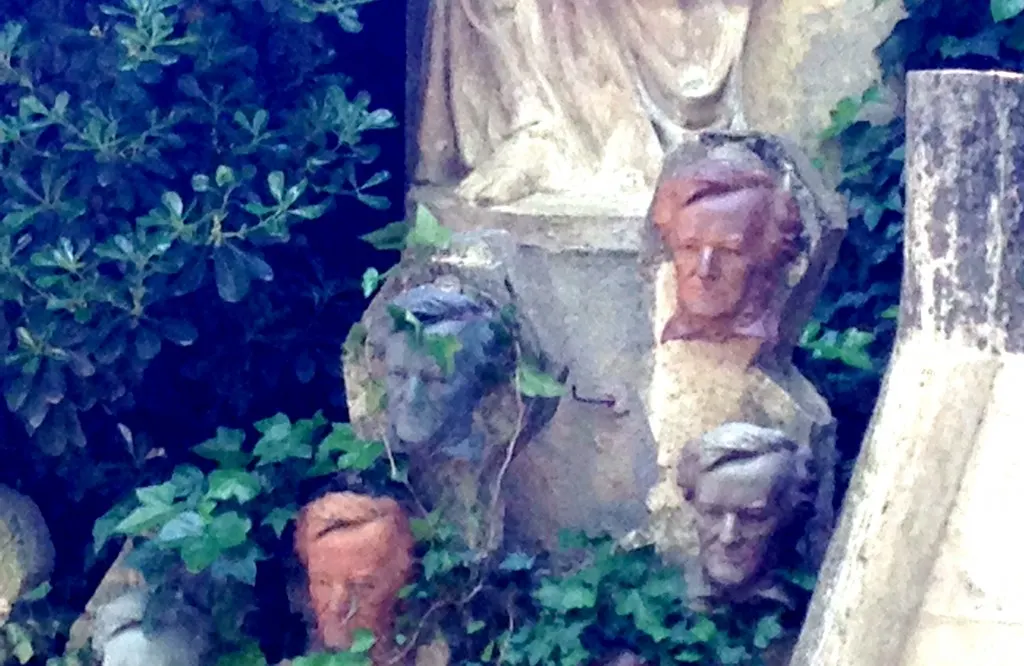
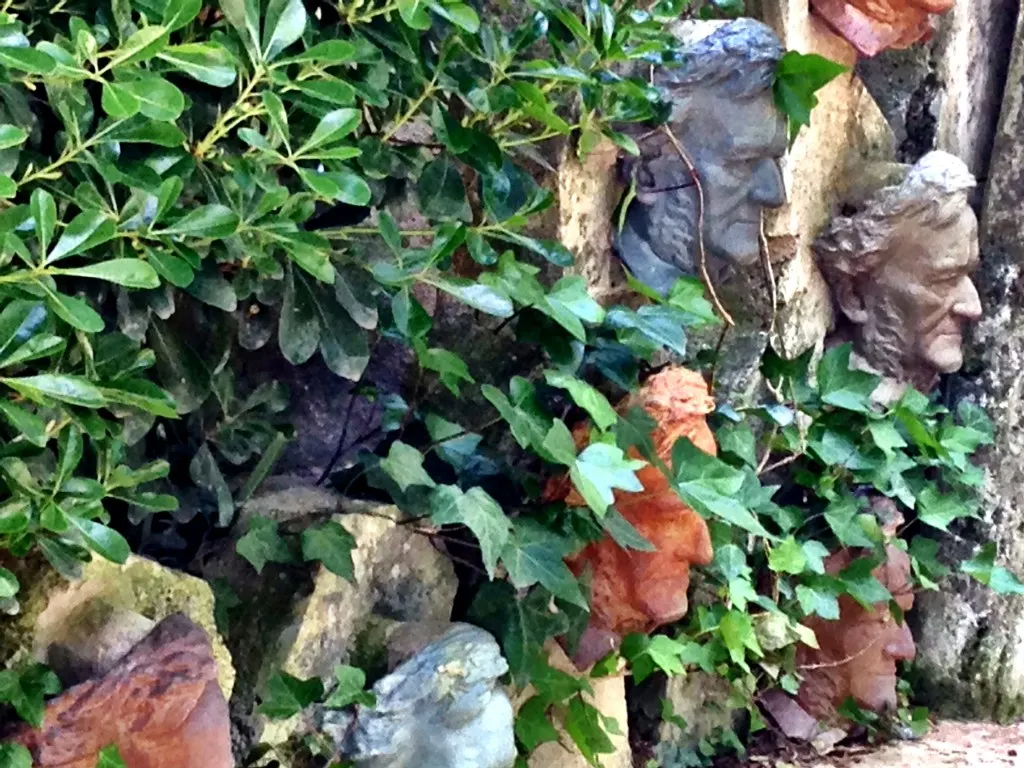
“[Author Ian] Gibson found evidence in Dali’s diaries – written in Catalan when he was only 17 – that the artist had fabricated his entire persona. ‘He admitted he was a fake, that every gesture was calculated for effect, that life was a farce and that he had to pretend to be what he was not. He swore that if he played at being a genius, he would become one.’ “
Fame and Shame and Salvador Dalí, The Independent
Other Opinions of Gala
Others had already realized that Salvador was not the only narcissist in the house. Bohemian “It Girl”, Parisian Leonor Fini thought Gala “physically attractive,” but observed “every instant had to represent a revenge, a conquest, or an advantage.” Gala vividly realized where her bread was buttered, though: Anaïs Nin, fellow houseguest at a Virginia country estate during WWII with the Dalís, observed, “before we knew it, the household was functioning for the well-being of Dalí. Gala assumed we were all there to serve Dalí.”
By this time, their carefully cultivated celebrity status was firmly entrenched. George Orwell was a contemporary of sorts who had actually fought in the Spanish Civil War rather than flee the conflict as Dalí had. In a scathing recollection written during the height of World War II when the Dalís were safely ensconced within adoring American society, the English moralist explains how it all snowballed:
“He grew up into the corrupt world of the nineteen-twenties, when sophistication was immensely widespread and every European capital swarmed with aristocrats and rentiers who had given up sport and politics and taken to patronising the arts. If you threw dead donkeys at people, they threw money back. A phobia for grasshoppers — which a few decades back would merely have provoked a snigger — was now an interesting ‘complex’ which could be profitably exploited. And when that particular world collapsed before the German Army, America was waiting.”
George Orwell, Benefit of Clergy: Some Notes on Salvador Dali, 1944
Their Disorders on Display
Dalí harbored irrational fears throughout his life: he was petrified of women’s genitalia (perhaps in reaction to perceived inadequacies of his own), and associated sex with “putrefaction and decay.” After observing colonies of ants devour larger animals as a child, he remained fearful of them and other insects. These fears are on repetitive display inside the house and in the garden.
“In Dalí’s work, ants represent decay, decomposition, change.”
– Paul Chimera
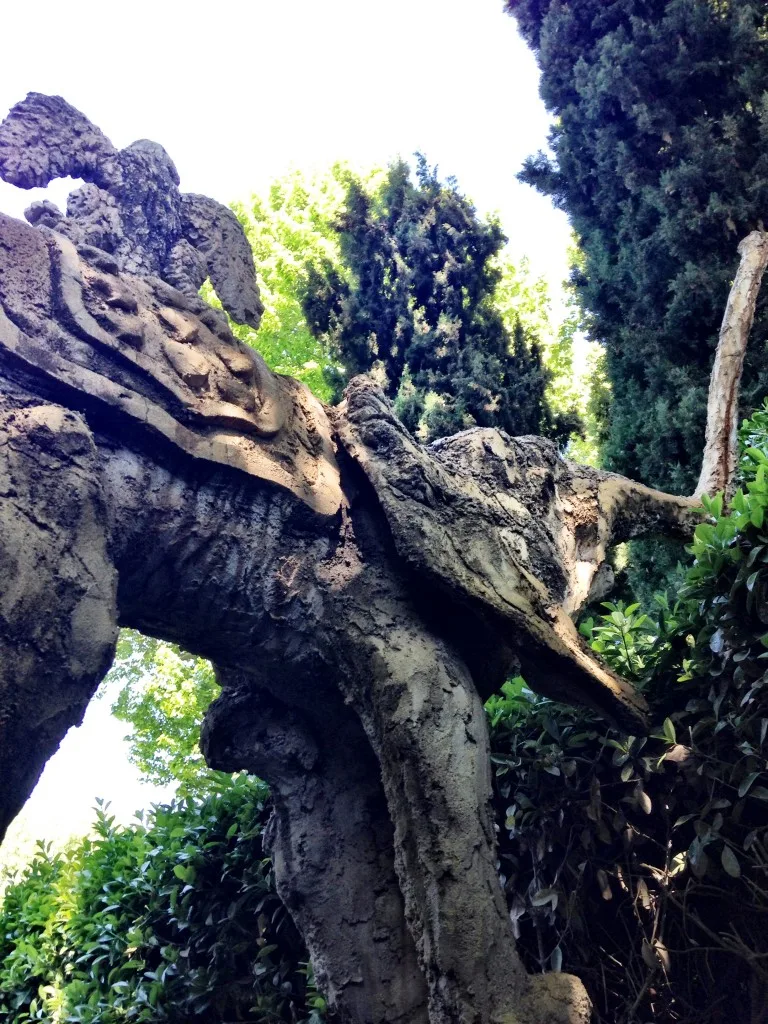
Famously, the castle and garden of Gala Dalí were off limits to her husband unless she issued him a written invitation. There were practical reasons for this. As Dalí’s celebrity increased, the limelight faded for Gala. She turned to new, younger male companions for the affection and validation she craved. Even so, the couple was married in a religious ceremony in 1958.
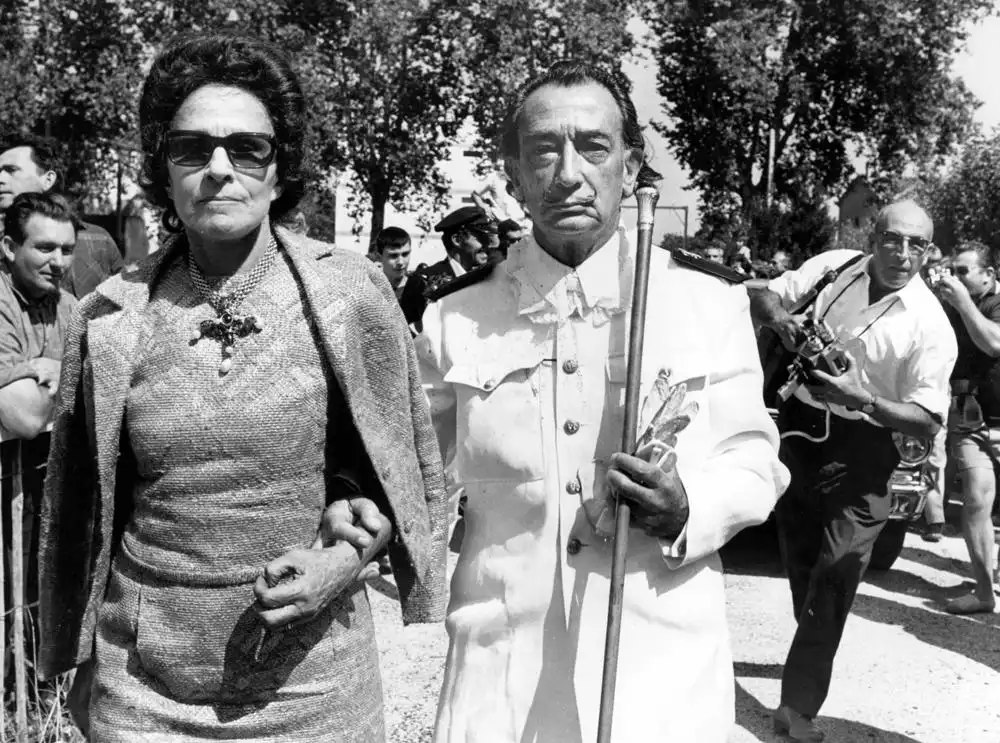
There are those in Púbol who still remember the haughty, self-absorbed Gala Dalí. Restaurant Can Bosch down the hill from the castle delivered daily meals. There was no place to prepare anything but a snack at the castle. Its kitchen had been repurposed into a hedonistic bathroom for Gala; its Aga stove was covered to make an enormous dressing table for her daily toilette.
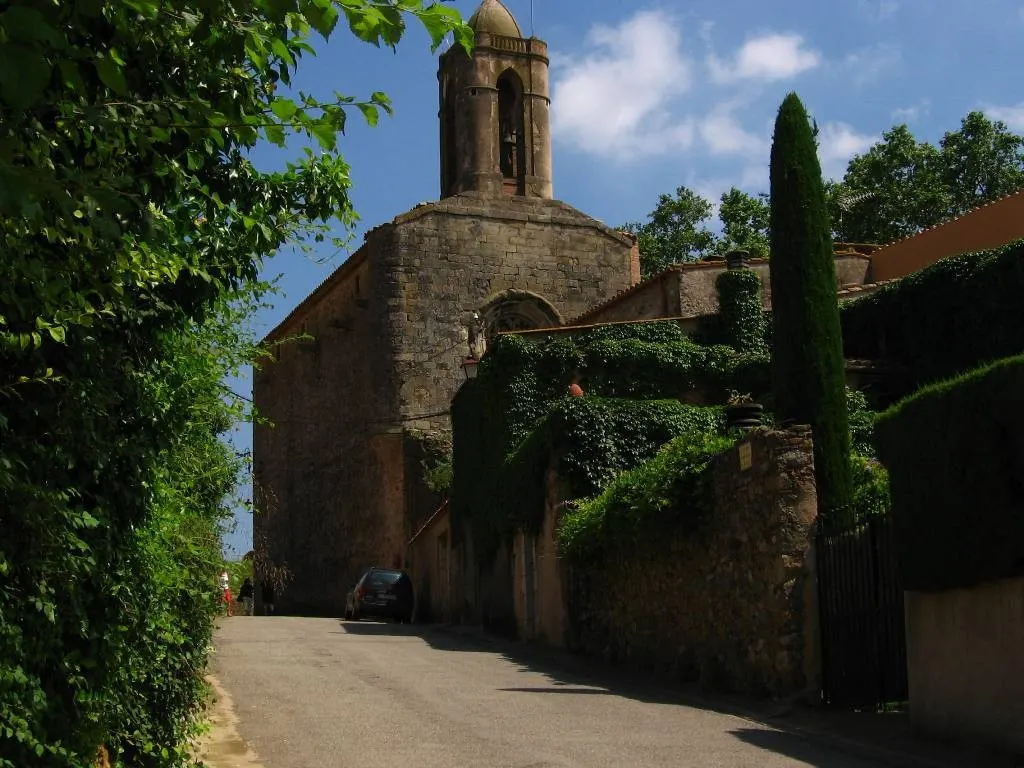
“Salvador and Gala Dalí really were quite unappealing people: self-centered to the point of extreme pathology, greedy, and remarkably philistine.”
– Stephen Schwartz, The New Criterion
Gala could be quite imperious with the townspeople, insisting on parking in forbidden areas and commanding the police to look after her car while she shopped. In 1974, Dalí was worth $32 million, but generosity did not extend outside of each other. Several of his secretaries, whom they’d refused to directly pay, made do instead with commissions. Yet Gala demanded money in exchange for every gesture and appearance: $100 per live autograph, $10 per signature on a blank banknote sized page. Dalí could do about 100 of these per hour, and off they went to eager resellers.
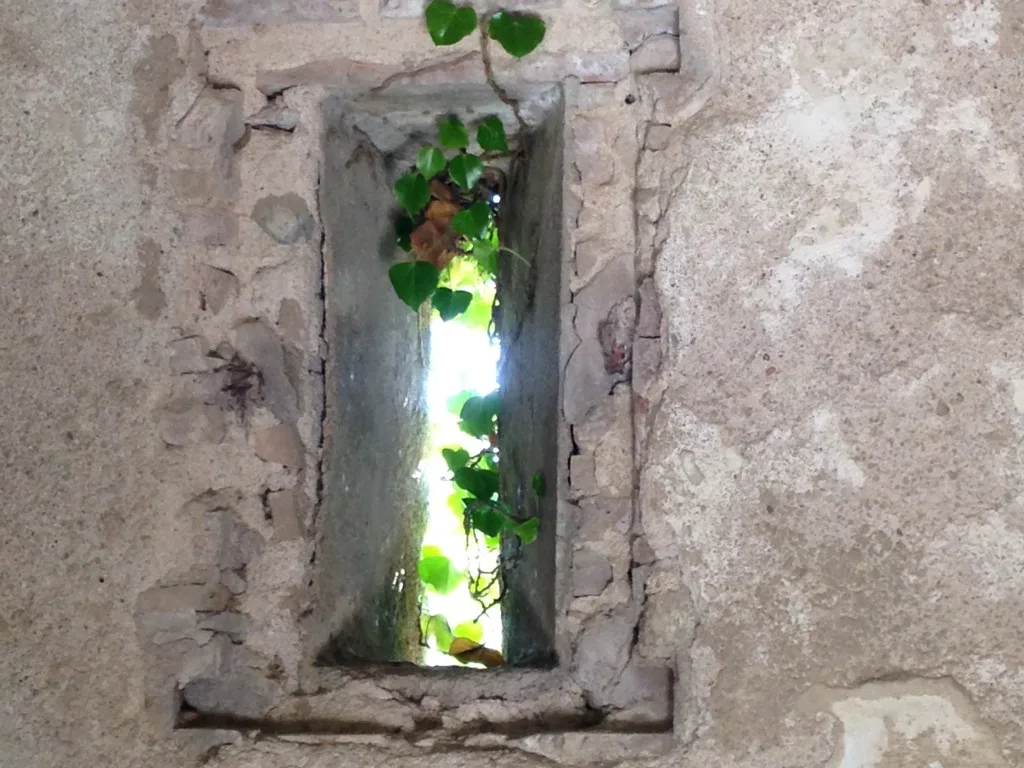
As the currency Gala most valued – her youth and beauty – began to diminish, her involvement with younger men increased. Her most notorious relationship, with the lead vocalist from Jesus Christ Superstar, occurred when she was in her late seventies. Gala’s attention to her husband declined, and he became more agitated by this. Some suggest that he may have physically abused Gala during this period; others, that she attempted to poison him.
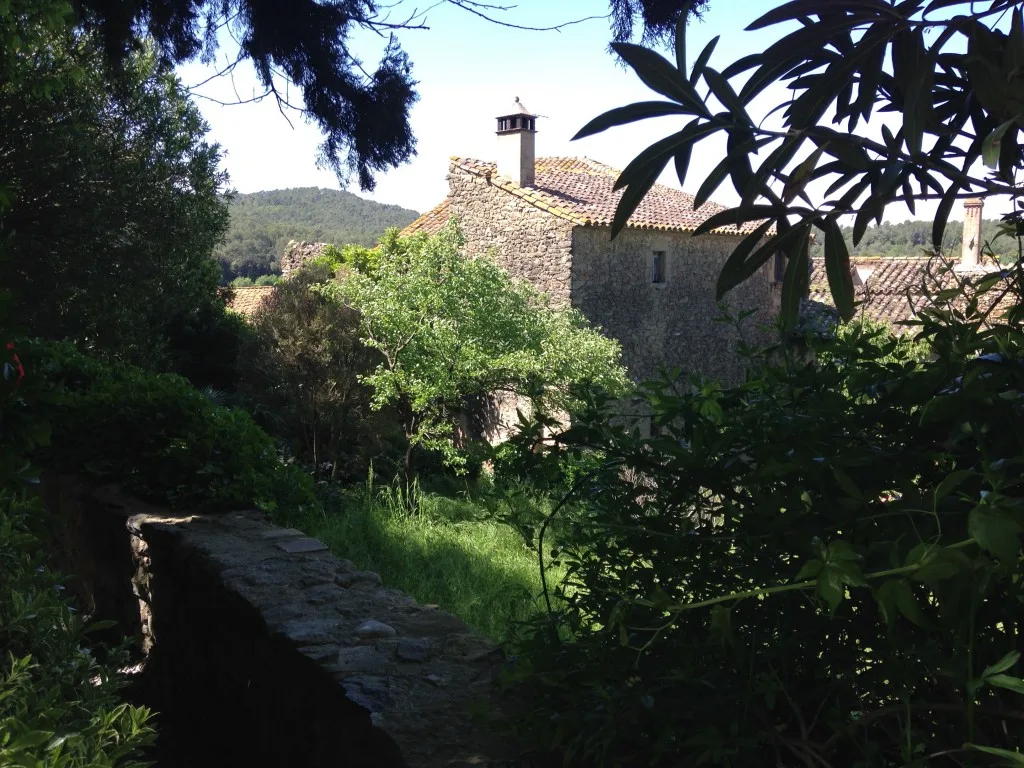
All of this is hard to process as you walk the gravel paths in the garden of Gala Dalí. The castle is situated at the edge of Púbol looking down over town on the one side, adjacent to grain fields on the other. Hedges are neatly clipped, and in the golden hour, the fantastical creatures Dalí sculpted appear more whimsical than sinister.

But still, dead Gala’s Cadillac conjures a prophetic Dalí installation about which Orwell famously said, “Mere moral disapproval does not get one any further, but neither ought one to pretend, in the name of ’detachment’, that such pictures as Mannequin Rotting in a Taxicab are morally neutral.”
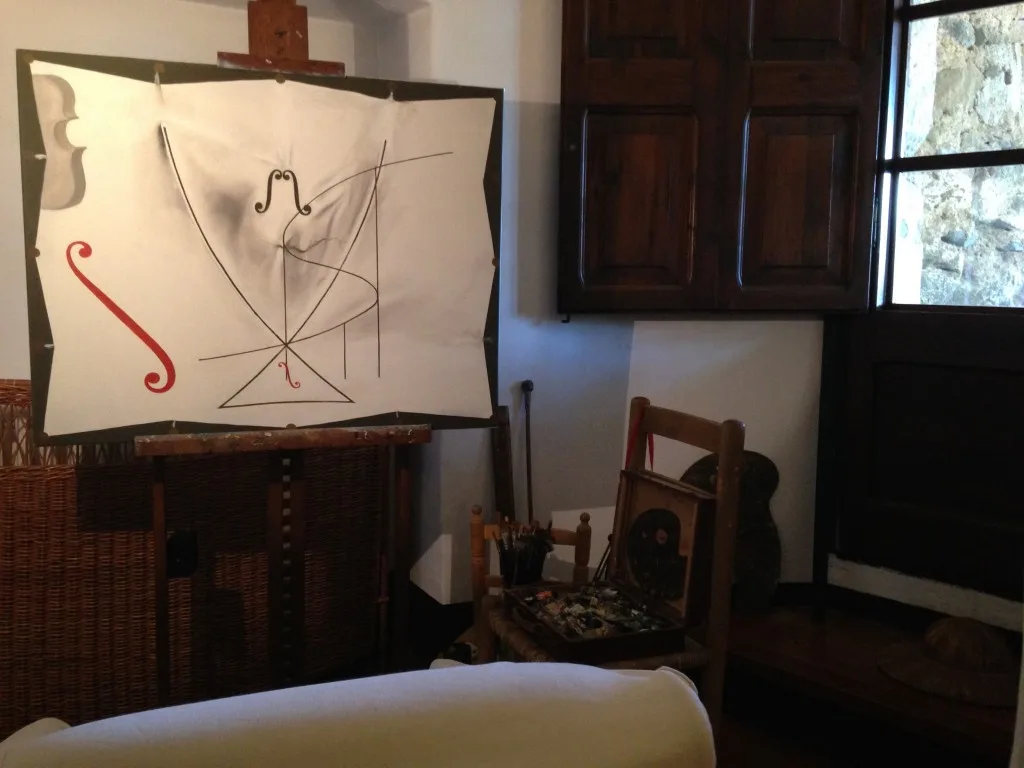
We may appreciate the strange beauty with which a devoted Salvador Dalí embellished Gala’s refuge. Most will certainly regard him as an artistic genius, and give Gala her due as his muse. However, perhaps we should temper our appreciation with the truth about who they really were. This lingering energy is something to think about as we wander in the castle and garden of Gala Dalí.
Discover hotels in and around Púbol.
Pinnable Image:
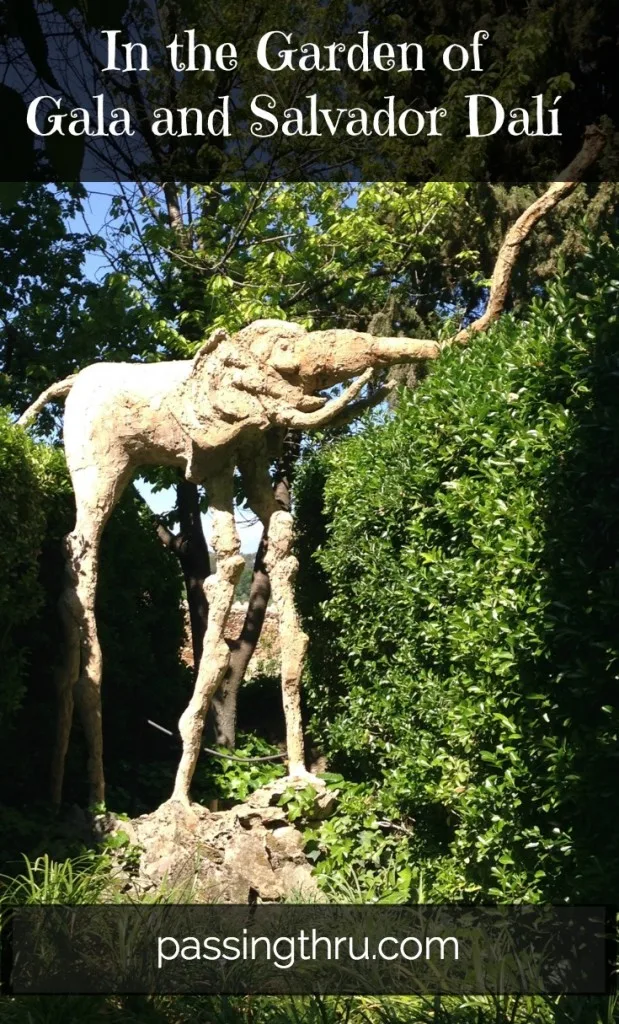
Practical Information:
Casa Museu Castell Gala Dalí Púbola,17120 Púbol (La Pera). Tel. +34 972 488 655. Open 15 March – 31 December. Group visits by prior arrangement. Guided tours for groups by appointment.
We were the guests of Casa Museu Castell Gala Dalí Púbola during our visit, arranged by Costa Brava Turisme and Visit Empordà. Opinions, as always, are our own.
Tips for Trip Success
Book Your Flight
Find an inexpensive flight by using Kayak, a favorite of ours because it regularly returns less expensive flight options from a variety of airlines.
Book Your Hotel or Special Accommodation
We are big fans of Booking.com. We like their review system and photos. If we want to see more reviews and additional booking options, we go to Expedia.
You Need Travel Insurance!
Good travel insurance means having total peace of mind. Travel insurance protects you when your medical insurance often will not and better than what you get from your credit card. It will provide comprehensive coverage should you need medical treatment or return to the United States, compensation for trip interruption, baggage loss, and other situations.Find the Perfect Insurance Plan for Your Trip
PassingThru is a participant in the Amazon Services LLC Associates Program. As an Amazon Associate I earn from qualifying purchases.
To view PassingThru’s privacy policy, click here.

Lydian
Friday 17th of July 2015
What a fascinating story! We were visiting part of the Dalinian triangle last year and this was the only place we missed. I do hope to get there one day though. While reading your post I also realized how little I actually knew about Gala, but I have always wondered about her and the couple's relationship..
Suzanne Fluhr
Sunday 21st of June 2015
I've always felt "creeped out" by Dali without even knowing his story that you so engrossingly told here. I wish I knew all this when a few years ago, I had lunch with a friend of a friend (at Philadelphia's stodgy Union League of all places). When I met her, she was married to a pulmonary physician (as am I), but she told us about when she used to date Salvador Dali. I surely would have had a few more questions for her had I already read this post.
Betsy Wuebker
Monday 22nd of June 2015
Hi Suzanne - What! That's an incredible story! It would have to have been before his health deteriorated in the early 80's. Gala died in 1982. Do you think it adds up? Inquiring minds want to know!
Simone
Sunday 21st of June 2015
Wow such stunning photographs! x
Betsy Wuebker
Sunday 21st of June 2015
Hi Simone - Thank you.
Anita @ No Particular Place To Go
Sunday 21st of June 2015
Absolutely fascinating post and I love your opening paragraph of the dead Gala taking her last ride! The celebrities of the twenties and thirties all seem to have been out sized and WAY over-the-top as they stretched the boundaries of what was acceptable in both the arts and their lifestyles. Perhaps they weren't very likeable but they certainly remain interesting!
Betsy Wuebker
Sunday 21st of June 2015
Hi Anita - Yes, it's an interesting point. With the advent of better communication, their antics reached a bigger audience. Did that make them seem even larger than life? For sure, these two knew how to manipulate coverage in their favor, and they're fascinating.
Wandering Carol
Friday 19th of June 2015
Fabulous! From now on I'm going to pretend I'm a genius and tell my husband he needs an invite to visit me. Hobby horse! I love it. I need a throne! I learned so much from this post. I'd never even heard of Gala. Thanks, Betsy.
Betsy Wuebker
Sunday 21st of June 2015
Hi Carol - I didn't know very much about her until our visit, either. The more I learned the more I wanted to know. Glad you enjoyed it.